 |
|
Questions and Answers about Nanotechnology
What are nanomaterials?Nanoscale materials are defined as a set of substances where at least one dimension is less than approximately 100 nanometers. A nanometer is one millionth of a millimeter - approximately 100,000 times smaller than the diameter of a human hair. Nanomaterials are of interest because at this scale unique optical, magnetic, electrical, and other properties emerge. These emergent properties have the potential for great impacts in electronics, medicine, and other fields.  Where are nanomaterials found?Some nanomaterials occur naturally, but of particular interest are engineered nanomaterials (EN), which are designed for, and already being used in many commercial products and processes. They can be found in such things as sunscreens, cosmetics, sporting goods, stain-resistant clothing, tires, electronics, as well as many other everyday items, and are used in medicine for purposes of diagnosis, imaging and drug delivery. What are some of the main take-home points that the NIEHS and NTP want people to know about nonmaterials?There are three main take-home points:
Why is NIEHS involved in nanotechnology?NIEHS has two primary interests in the field of nanotechnology: harnessing the power of engineered nanomaterials to improve public health, while at the same time understanding the potential risks associated with exposure to the materials. Currently, very little is known about nanoscale materials' effect on human health and the environment. The NIEHS is committed to supporting the development of nanotechnologies that can be used in environmental health research, while also investigating the potential risks these materials pose to human health.
Research and Training Funded by NIEHSWhat role is the NIEHS playing in the area of nanotechnology?The NIEHS supports grantees across the country working on issues related to natotechnology. The extramural activities are focused on three main areas:
The NIEHS also administers the National Toxicology Program, which is researching the potential human health hazards associated with the manufacture and use of nanomaterials. 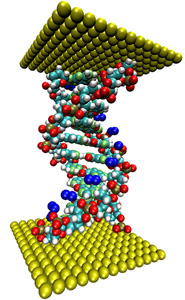
What is the NIEHS doing to advance our understanding of the health effects from nanotechnology?NIEHS is committed to coordinating and supporting research that is focused on understanding basic toxicological effects on organ systems from exposure to nanomaterials. The NIEHS has formed partnerships with other federal agencies to support grantees across the country as part of its Environmental Health and Safety program. For example, the NIEHS has joined with the Environmental Protection Agency (EPA), National Science Foundation (NSF), National Institute for Occupational Safety and Health (NIOSH) and other NIH Institutes and Centers (ICs) over the years to support research strategies addressing environmental health and safety aspects of engineered materials. NIEHS currently funds numerous grants (http://www.niehs.nih.gov/research/supported/programs/nanohealth/grantees/index.cfm) related to NanoHealth. Visit the NIEHS NanoHealth and Safety program (http://www.niehs.nih.gov/research/supported/programs/nanohealth/index.cfm) website for additional information on NIEHS' involvement in the field of nanotechnology. What is the NIEHS doing to advance the development and application of nanomaterials to be used in environmental health research?The NIEHS has developed its nanotechnology application program mostly through trans-NIH (http://www.nibib.nih.gov/Research/NIHNano) Specifically, how is the Superfund Basic Research Program involved in nanotechnology-related issues?
The Superfund Basic Research Program (SBRP) (http://www.niehs.nih.gov/research/supported/sbrp/index.cfm) is supporting grantees that are developing new or improved technologies and methods, including the promising field of nanotechnology, to help monitor and remediate, or clean up, around Superfund sites. Nanomaterials offer some distinct advantages to remediation technologies such as large surface-area-to-volume ratio and high chemical reactivity. Superfund researchers are also looking at how nanomaterials behave in the environment as they are used for remediation. For more information specifically related to nanotechnology, visit the SBRP Search (http://tools.niehs.nih.gov/sbrp/search/index.cfm) page and enter the search term "nano*",The SBRP is a network of university grants that are designed to seek solutions to the complex health and environmental issues associated with the nation's hazardous waste sites. The research conducted by the SBRP is a coordinated effort with the Environmental Protection Agency, which is the federal entity charged with cleaning up the worst hazardous waste sites in the country. The SBRP also collaborates with other agencies to conduct interactive web-based "Risk e Learning" seminars that provide information about innovative treatment and site characterization technologies to the hazardous waste remediation community. Visit the Nanotechnology - Applications and Implications for Superfund (http://www.niehs.nih.gov/research/supported/sbrp/events/riskelearning/nanotechnology.cfm) page for a list of some of the seminars related to nanotechnology. What is the National Toxicology Program (NTP) doing to assess the health risks associated with nanotechnology?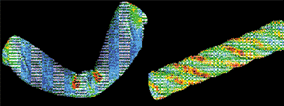
The National Toxicology Program (http://ntp.niehs.nih.gov/) is engaged in a broad-based research program to address the potential human health hazards associated with the manufacture and use of nanomaterials. Scientists at the three core agencies that comprise the NTP - the NIEHS, National Center for Toxicological Research at the U.S. Food and Drug Administration, and National Institute for Occupational Safety and Health of the Centers for Disease Control and Prevention - are working to evaluate the toxicological properties of a representative cross-section of several different classes of nanoscale materials, including (1) metal oxides, (2) fluorescent crystalline semiconductors (quantum dots), (3) carbon fullerenes (buckyballs), and (4) carbon nanotubes, through the NTP Nanotechnology and Safety Initiative (http://ntp.niehs.nih.gov/index.cfm?objectid=7E6B19D0-BDB5-82F8-FAE73011304F542A). Key parameters of greatest concern relative to their potential toxicity are size, shape, surface chemistry and composition. Researchers will use studies in laboratory animals and cells, as well as mathematical models to evaluate and predict where these materials go in the body, and what potential health effects they may cause. What is the NIEHS doing to help protect workers exposed to nanomaterials?
The NIEHS Worker Education and Training Program (WETP) supports workers engaged in activities related to hazardous materials, and waste generation, removal, containment, transportation and emergency response. As part of this effort, the National Clearinghouse is the primary national source for hazardous waste worker curricula, technical reports, and weekly news. The Clearinghouse provides a number of safety-related resources (http://tools.niehs.nih.gov/wetp/index.cfm?id=537) in the expanding field of nanotechnology. 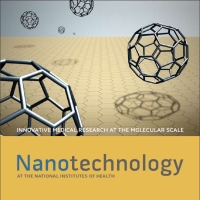
Cross-Agency Nanotechnology InitiativesWhat cross-agency initiatives is the NIEHS involved in?NIEHS is involved in the following cross-agency intiatives:
Are nanomaterials regulated?The NIEHS is not a regulatory agency and, therefore, does not regulate nanomaterials. For regulatory questions, or information on what other federal agencies are doing regarding nanotechnology, please visit the appropriate agency. An abbreviated listing is provided below.
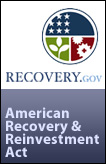 (http://www.niehs.nih.gov/recovery/index.cfm) (http://www.niehs.nih.gov/recovery/index.cfm)
New NIEHS Funding Opportunities in NanotechnologyHow can I get funding for my research in nanotechnology?Nanotechnology and Safety is identified as a signature initiative for the NIEHS, to be supported in part by the American Recovery and Reinvestment Act (ARRA) (http://www.niehs.nih.gov/recovery/). Some of the new funding opportunities related to ARRA in the nanotechnology area include: Challenge GrantsNIH has designated at least $200 million in Challenge Grants (http://grants.nih.gov/grants/funding/challenge_award/) NIEHS has selected several specific topic areas to support within the NIH Challenge Areas, including nanotechnology and enabling technologies, as follows: 13-ES-101 - Methods to evaluate the health and safety of nanomaterials 06-ES-101 - Measuring the body burden of emerging contaminants: Biosensors and lab "on-chip" technology for measuring in vivo environmental agent 06-ES-102 - 3-D or virtual models to reduce use of animals in research: Creation of miniature multi-cellular organs for high throughput screening for chemical toxicity testing Note: Challenge Grant applications are due April 27, 2009. Grand OpportunitiesThe purpose of the Research and Research Infrastructure Grand Opportunities (http://grants.nih.gov/grants/guide/rfa-files/RFA-OD-09-004.html) The goal of the Grand Opportunity Grant Program in Engineered Nanomaterial Environmental Health and Safety (RC2) (http://www.niehs.nih.gov/recovery/nanomaterial-go.cfm) is to develop reliable and reproducible methods and models to assess exposure, exposure metrics, and biological response to nanomaterials. The coordinated research effort will include diverse routes of exposure to nanomaterials and in vitro and in vivo models of exposure and response. Contact: Dr. Sri Nadadur (mailto:nadadurs@niehs.nih.gov), (919) 541-5327 Note: Grand Opportunity applications are due May 27, 2009. 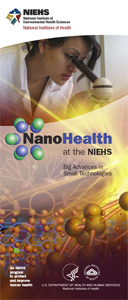
Dissemination of Information
Nanotechnology Related Conferences
Notable Papers and Advances Supported by the NIEHS and NTP in Nanotechnology
Additional Resources
|
|


